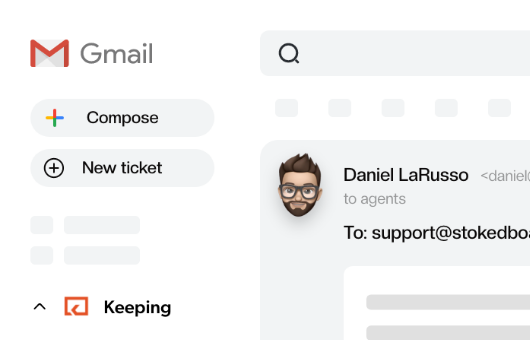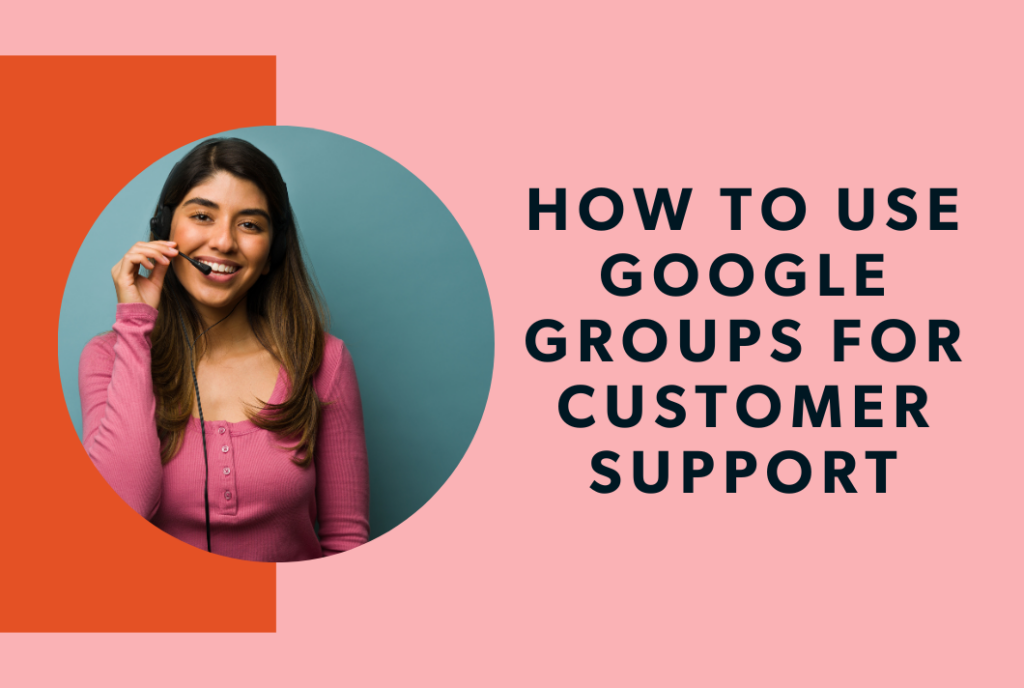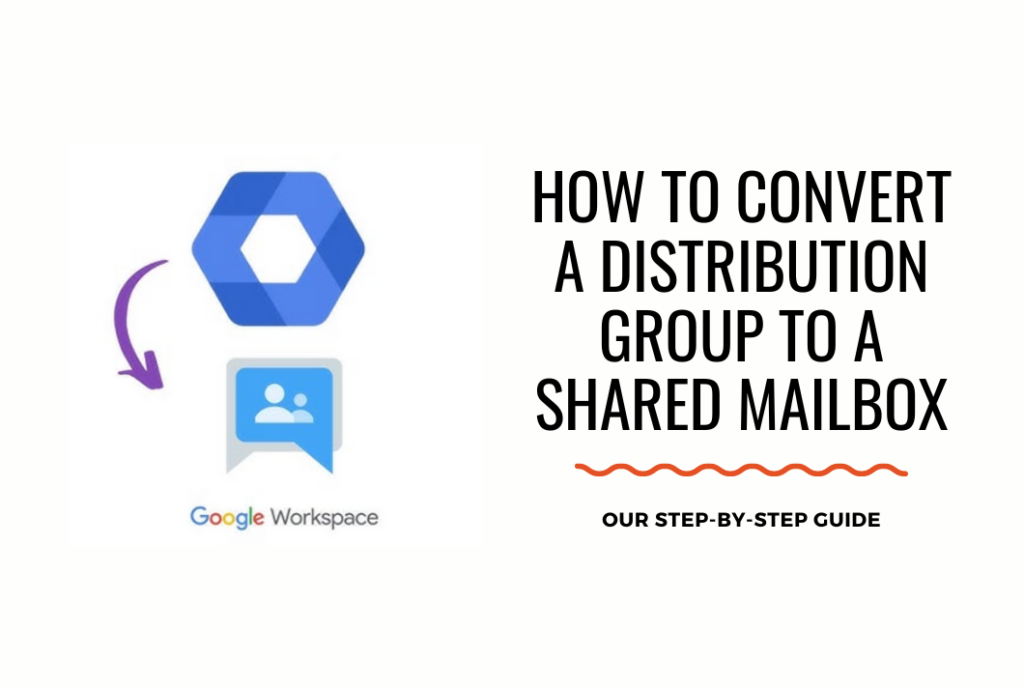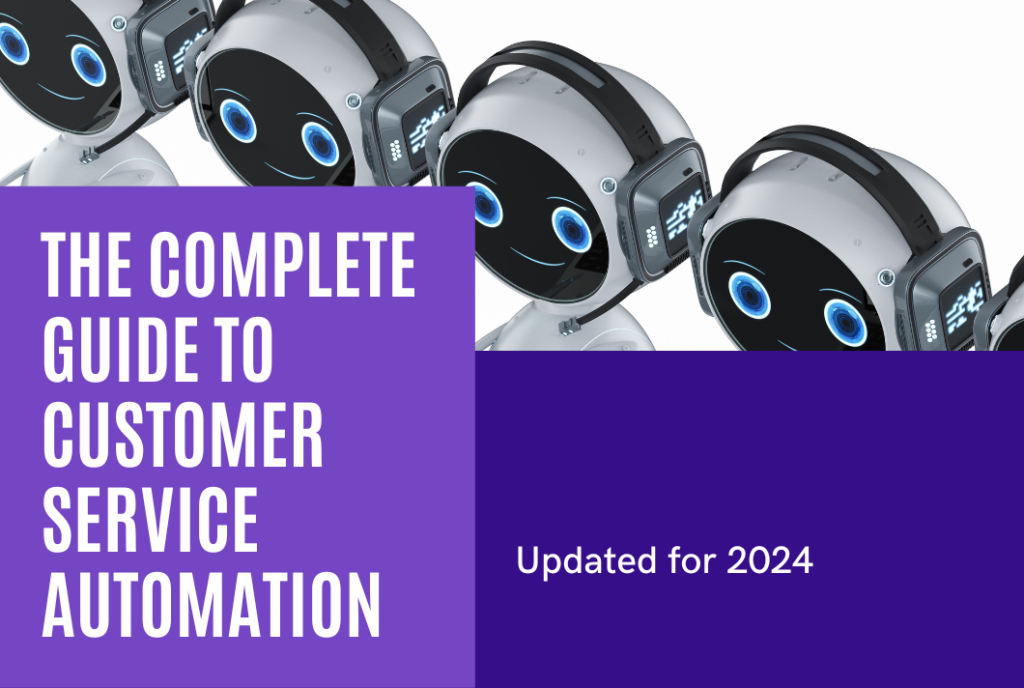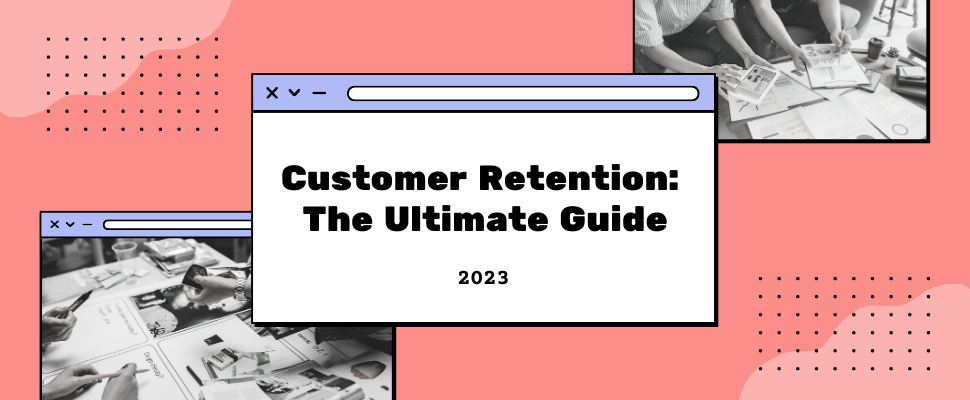
The Ultimate Customer Retention Guide
When customers feel that their needs are being met and their concerns are being addressed promptly and effectively, they are more likely to return to that business in the future. This customer retention guide can help you deliver effective customer service.
- Selling to a current customer has a 60–70% chance of success, compared to 5-20% for a new prospect.
- 82% of businesses agree that retaining customers is less expensive than acquiring new ones.
- Returning customers spend an average of 33% more on every order than other customers.
All of these statistics indicate one thing: Customer retention and its benefits for your business. Customer acquisition is great, but customer retention is better.
So, how do you retain your customers? We’ll tell you in this customer retention guide. If you read till the end, you’ll be fully equipped with customer retention and how to practice it. Let’s begin!
What is customer retention?
Customer retention refers to the ability of a business to retain its customers over time. It is a key performance indicator that measures the loyalty of customers and the effectiveness of a company’s customer relationship management strategies.
Customer retention involves building and maintaining solid customer relationships, above customer expectations, providing them with high-quality products or services, and delivering exceptional customer service.
Successful customer retention involves:
- Understanding the needs and expectations of customers.
- Responding to their feedback.
- Providing personalized experiences that exceed their expectations.
Retaining existing customers is much more cost-effective than acquiring new ones, as it costs more to attract and convert new customers than to keep existing ones.
Companies that can achieve high customer retention levels are more likely to experience sustainable growth, increased profitability, and a strong brand reputation. By investing in customer retention strategies, businesses can improve customer loyalty, increase lifetime value, and ultimately drive business success.
Why is retaining customers necessary?
Before we dive deep into customer and retention metrics, it’s essential to know why retaining customers is essential. And here’s why:
Loyal customers spend more
Customers who stick to your brand will likely spend more than new customers. It’s not just us saying it; statistics say so too.
A study by the Temkin Group found that loyal customers are five times more likely to repurchase from a company, four times more likely to refer others to the company, and seven times more likely to forgive a company for a mistake compared to non-loyal customers.
This indicates that the most loyal customers have a higher lifetime value and are more valuable to a business over the long term. Hence, customer retention is important.
Customer retention is cost-effective
Harvard Business Review says it costs 5 to 25 times more to acquire a new customer than to retain an existing one. And this makes sense, too: you don’t need to waste time or money looking for new ones; you have to keep the ones you have happy.
Moreover, retained customers tend to be more satisfied with the service and support they receive from a business. This can lead to lower customer service costs. Businesses can invest less in resolving complaints and addressing issues.
Better brand reputation
Who doesn’t want a good brand reputation? We’re sure you do. And customer retention brings that to you. Retained customers are more satisfied with the service and support they receive from a business, which can lead to more positive reviews and feedback. This can build a positive brand reputation and attract new customers through word-of-mouth referrals.
What is your customer retention rate?
There is no one set formula to calculate customer retention rate. You may find different formulas at different places and are free to create your own too. Here is the simple formula we have to calculate CRR:
CRR = ((EC-NC)/SC)) x 100
Where:
EC: The number of customers at the end of a given period.
NC: The number of new customers acquired during the period.
SC: The number of customers at the start of the period.
For example, suppose a company had 1000 customers at the start of the year and acquired 200 new customers during the year. At the end of the year, the company had 900 customers. The CRR for the year would be calculated as follows:
CRR = ((900-200)/1000)) x 100
CRR = (700/1000) x 100
CRR = 70%
This means that the company was able to retain 70% of its customers over the course of the year. A high CRR indicates that a company is successful in keeping its existing customers happy and satisfied, which is critical for the business’s long-term customer success too.
Other indicators of CRR
You know why measuring customer retention is important, so here are a few ways you can measure and improve customer retention rates:
Repeat Purchase Rate
One of the best indicators for customer retention rate is the repeat purchase rate of your customers. This is the percentage of customers who make a repeat purchase from your business over a specific period of time. This metric is commonly used in retail and e-commerce businesses.
To calculate the repeat purchase rate, divide the number of customers who made more than one purchase by the total number of unique customers during a given time frame. For example, if 150 of the 500 customers made more than one purchase in January, the repeat purchase rate would be 30% (150/500).
Churn Rate
Churn rate is the percentage of customers who have stopped using your product or service over a specific period of time. So, how does the churn rate indicate your customer retention rate? It’s simple: the higher your churn rate, the lesser your customer retention is.
Here’s how to calculate the churn rate:
- After determining the time period to analyze, count the number of customers at the beginning (C1) and end (C2) of the period and the number who left (L) during that time.
- Calculate the churn rate using the formula (L / C1) x 100.
- To understand your customer retention rate, subtract the churn rate by 100. This means customer retention rate = 100 – churn rate.
By calculating the churn rate and comparing it with the total number of customers at the beginning of that period, your brand can understand the percentage of customers it could not retain.
Net Promoter Score (NPS)
Net promoter score measures customer satisfaction and loyalty by asking customers how likely they are to recommend your product or service to others. While not directly linked to customer retention rates, high NPS scores indicate that customers are likelier to remain loyal, make repeat purchases, and recommend the brand to others.
Low NPS scores suggest customers may discontinue their relationship with your brand. That said, we advise you to also rely on something other than NPS to understand your customer retention. Instead, use it in combination with other metrics we’ve mentioned.
Customer Lifetime Value (CLV)
This metric measures the total value a customer brings to your business over their relationship with your company. CLV considers factors such as the average purchase value, purchase frequency, and customer retention rate to calculate the total value of a customer to your business.
Customer lifetime value is an indicator of customer retention rates because it measures the long-term value of a customer to a company. Customers with a high CLV are likelier to remain loyal to the brand. At the same time, those with a low CLV may be less likely to continue their relationship with the company over time.
Customer Engagement
As the name suggests, the customer engagement metric measures how engaged your customers are with your business, including how often they interact with your brand and how satisfied they are with their overall experience. This can be measured through surveys, social media engagement, and other customer feedback forms.
A higher level of customer engagement is typically associated with a higher degree of loyalty. More engaged customers are more likely to remain customers and make repeat purchases.
By improving customer engagement, companies can increase the likelihood of retaining their existing customers and reducing customer churn rates. As a result, customer engagement metrics can provide an important indicator of customer retention rates for a company.
Referral Rate
The customer referral rate is a metric that measures the percentage of customers who refer new customers to a company. This metric can indicate customer retention rates. It suggests that current customers are satisfied with the company’s products or services and are willing to recommend them to others.
A high customer referral rate indicates that customers are loyal and satisfied with the company and are likely to continue doing business in the future. A low customer referral rate may indicate that customers are dissatisfied with the company and may not continue doing business with it.
Strategies to keep customers coming back
Here are some strategies to help you retain your customers and keep them returning.
Focus on providing value
Your customers don’t just buy your product; they buy the value your product provides. As a brand, you should strive to provide value at every touchpoint because that keeps your customers returning for more.
Providing value does not just mean delivering a great product. While that is the most important part, it also means meeting the needs and expectations of customers at each stage of the buyer’s journey.
For example, Amazon uses customer data to recommend products that customers are likely to purchase, providing value to the customer and increasing customer loyalty. Spotify also uses customer data to create personalized playlists based on the user’s listening habits, making the listening experience more enjoyable for the customer and increasing their loyalty to the platform.
Here is how your brand can provide value at each stage of the buyer’s journey:
At the awareness stage, brands can create educational content. In contrast, they can offer product comparisons and demonstrations during the consideration stage.
At the decision stage, brands can offer incentives and excellent customer service. They can provide follow-up support and loyalty or referral programs during the post-purchase phase.
Make feedback a part of your system
Customers can only be retained if you work on their problems. And will only know their issues if you collect feedback. As a result, making feedback a part of your customer service system is a solid strategy for customer retention.
It involves creating a systematic process for collecting and analyzing customer feedback, using it to improve the customer experience, and continuously monitoring and measuring customer satisfaction levels.
Here is how you can implement this strategy in your organization:
- Create a feedback loop
To implement the feedback loop, your company can use various methods, such as surveys, feedback forms, or social media channels, to encourage customers to share their thoughts and concerns.
- Listen and respond to feedback
Once feedback is collected, it is essential to promptly analyze and respond to it. Based on your feedback, plan how this feedback would be used for your company’s benefit.
- Use feedback to improve customer experience.
Use customer feedback to identify areas for improvement and implement changes that improve the customer experience. For example, Nike used customer feedback to create more durable shoes that meet customer needs.
Provide customers with a consistent experience
Imagine a customer calling your customer service regarding a product failure issue. The first customer support representative is friendly, helpful, and polite on day one. When customers call for follow-up, they are met up with a rude, unhelpful, and non-responsive agent.
The customer feels frustrated and dissatisfied with the inconsistent customer service experience. After this incident, the customer may lose trust in the company and its products, leading to decreased customer retention.
This is precisely why mapping out a consistent customer service experience for your customers is an essential customer retention strategy. Here’s everything you can do to provide a consistent customer experience:
- Establish clear customer service standards
- Train employees to follow these standards
- Monitor customer satisfaction to identify areas of improvement
- Provide a seamless omnichannel experience
Underpromise and overdeliver
Underpromising and overdelivering is a strategy where a company intentionally sets low expectations for its customers and then exceeds those expectations by delivering more than promised.
By under-promising and over-delivering, your company can create a positive and memorable customer experience to retain customers. This exceeds their expectations and builds trust and loyalty with them, making them more likely to return for future purchases.
Amazon has an excellent example of underpromising and overdelivering. When you place an order on Amazon, you will find the delivery time to be more than expected. In most cases, if you’re promised a five-day delivery, you receive the product within four days.
This is what underpromise and overdeliver look like. Amazon underpromised their delivery time, and they could over-deliver by delivering early.
Another example of this customer retention strategy is when you receive an unexpected bonus or gift on your order, like a handwritten thank-you note or a free sample of another product.
Provide a customer loyalty program
A survey by Bond found that 79% of consumers feel that a loyalty program makes them want to continue doing business with a brand. This means that providing a loyalty program to your customers is an essential customer retention strategy.
A loyalty program works on a simple principle: the more your customers shop from your brand, the more rewards they will get. Multiple brands provide loyalty programs to their customers too improve their customer retention.
One such example is Sephora’s beauty insider program. Under this program, all members get 1 point for each $1 spent. These earned points can be redeemed for rewards like makeup and skincare products. Higher-tier members also receive benefits like free shipping and early access to new products.
Offer excellent customer service
When your customers keep receiving excellent customer service, they’ll always want to stick to your brand. Excellent customer service helps to establish a positive relationship between a business and its customers—which boosts customer retention.
When customers feel that their needs are being met and their concerns are being addressed promptly and effectively, they are more likely to return to that business in the future. Here is how you can deliver effective customer service and practice customer retention:
- Understand customer needs
- Train and empower customer service staff
- Communicate proactively
- Provide personalized service
- Resolve issues promptly
- Follow up and show appreciation
Suppose you are a brand that uses Gmail as its primary support channel. In that case, you should use Keeping to offer excellent customer service. Keeping the perfect solution that converts your Gmail inbox into a fully featured help desk. With features like agent allocation, collision detection, and workflow automation, you’ll be all set to deliver excellent customer service and keep customers coming back for more.
Customer retention real-life examples
Southwest Airlines
Southwest Airlines serves 45 states and carries over 11 million passengers each month. Southwest Airlines strongly focuses on customer experience, with friendly and personable flight attendants, free checked bags, and a no-fee flight change policy.
The company also offers a loyalty program called Rapid Rewards, which provides members with free flights and other benefits based on their travel history. All of this combined has created a huge customer base and served the benefits of customer retention.
Starbucks
Starbucks strongly focuses on customer experience, with friendly and knowledgeable baristas, free Wi-Fi, and comfortable seating. The company also has a loyalty program called Starbucks Rewards, which offers members free drinks and other perks based on their purchase history.
Join 150+ teams that are sharing inboxes with us
The easiest way to upgrade your shared Gmail account. There’s no credit card is required.
